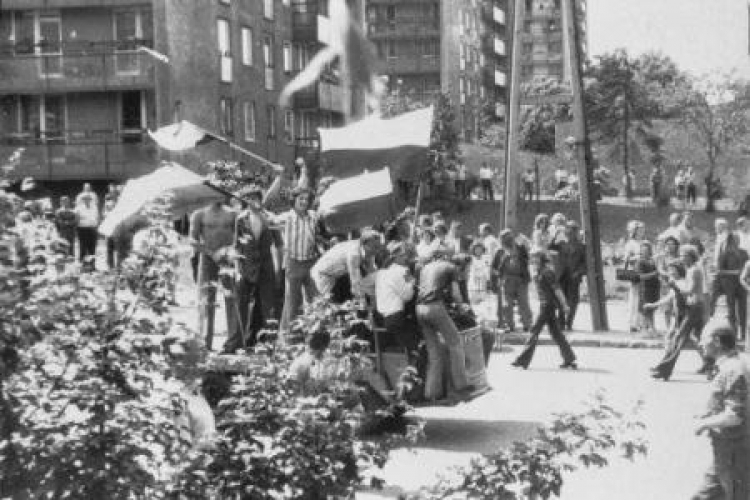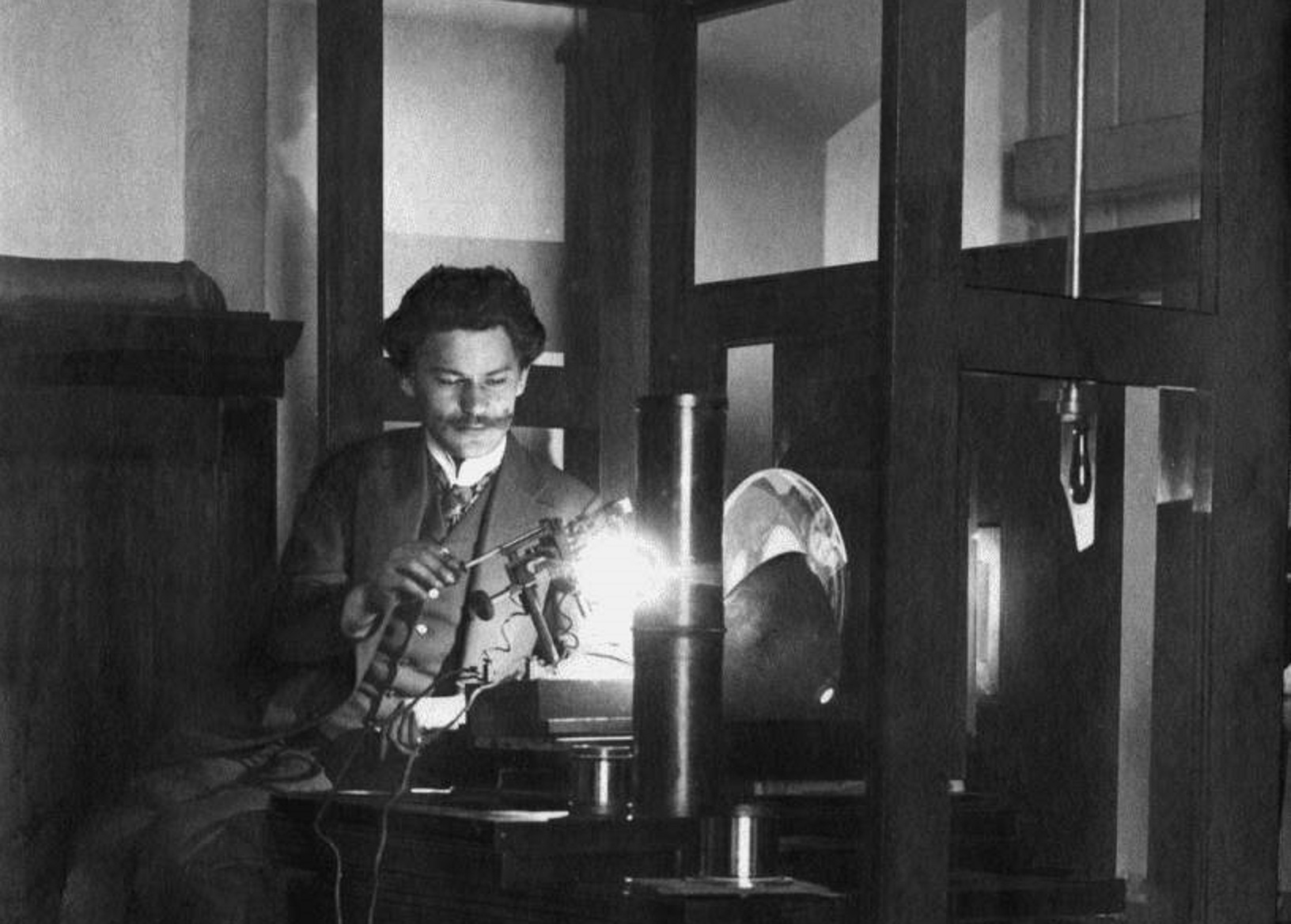On 25 June 1976, in response to a price increase announced by the government, strikes and demonstrations were organized in a number of workplaces across Poland. The most notable disturbances involving workers occurred in Radom, Ursus and Płock. Social protest was brutally crushed by the milicja, the Polish People’s Republic police, and by the Security Service. Approximately 2,500 people were arrested across the country.
On 24 June 1976, in a parliamentary speech broadcast live on the radio and on television, Prime Minister Piotr Jaroszewicz had presented a plan to increase retail prices. The changes were due to come into effect on 28 June. The prices of meat and meat products were to be increased by 69 percent, poultry by 30 percent, butter and dairy products by 50 percent, and sugar by as much as 100 percent. The authorities announced that they would be paying out compensation as a way of reimbursing those who have been hit by the increases, in due course – however, the rules for paying the compensation were universally dismissed as extremely unjust. People with the lowest income (1,300 zlotys a month, in the currency of the day) were entitled to 240 zlotys of compensation a month; while the highest earners (above 8,000 zlotys) could receive up to 600 zlotys.
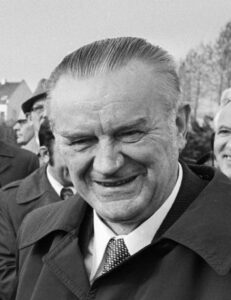
On 25 June, strikes broke out in numerous enterprises. In the morning, industrial actions were announced in at least 54 major plants, with a total of 60,000 workers at 97 workplaces in 24 provinces on strike throughout the day.
Manifestations and marches were held on the streets of Radom, Ursus and Płock. As they were coming to an end, demonstrators clashed with the milicja. Dramatic street fighting broke out in Radom. There were two fatalities: Jan Łabędzki and Tadeusz Ząbecki were crushed by a tractor-trailer filled with slabs of concrete, which they had attempted to push towards milicja officers.
In both Ursus and Płock, paramilitary formations (ZOMO) moved in towards the evening. By the time they intervened, the demonstrations were coming to an end; the authorities having already announced they would be backing down from the price increases.
In the Ursus mechanical plant, almost the entire staff had been on strike since the early hours. Employees gathered around the main offices. When all they could elicit by way of response from the management was a call to go back to work (their colleagues in Radom having had a similar experience), the Ursus workers took the spontaneous decision to move out onto the railway tracks and block the route from Warsaw to Poznań and from Warsaw to Krakow, which brought all trains to a halt. The demonstrators formed a living barrier as they sat on the tracks through the day.
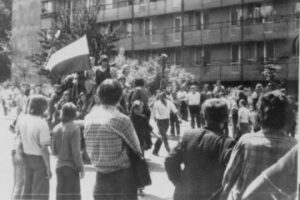
An attempt was made in the afternoon to cut through the rails with an acetylene torch, and when that failed, tracks were dismantled and engine drivers coerced to pull over. Around 9;30 pm, ZOMO troops started to hurl projectiles at the few protesters still left on the tracks, used tear gas, and went on to launch a violent attack. Several people were wounded.
Although this time workers were not shot at – unlike in December 1970, when, according to official data, more than 40 people were killed on the Polish coast – the demonstrations were being dispersed by means of brutal assaults. Dramatic accounts of savage beating and outrages at every opportunity can be read in scores of sources, and heard from many witnesses.
Those who were detained in Radom, Ursus and Płock appeared before magistrates and criminal courts. In Radom, the notorious “fitness trails” became a poignant memory: the term stood for double files of ZOMO troops clubbing demonstrators who were forced between them. In two trials in Ursus, seven people were sentenced to between three and five years in prison. Many were fired.
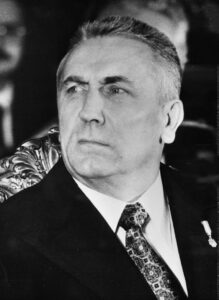
Already on the evening of 25 June, the authorities withdrew from price increases they had previously been insisting on. Not only did this prevent the conflict from escalating – but also, in equal measure, hindered government and Party-management reshuffling. Prime Minister Jaroszewicz, whom the public had singled out for responsibility for the unfortunate price increases, tendered his resignation to the First Secretary of KC PZPR (the Central Committee of the Polish United Workers’ Party), Edward Gierek.
However, the prime minister’s resignation was not accepted. Consequently (and given that new management had not been put in place), no new light was shed on the workers’ demonstrations. Following a demand from First Secretary Gierek, Party authorities in many towns and cities held rallies of support for the Party and its policies. The “troublemakers” of Ursus and Radom were publicly condemned during these mass gatherings.
The events in Radom, Ursus and Płock proved significant for the history of Poland in the following years. Oppositions groups were starting to form at that time, with Komitet Obrony Robotników (KOR, the Workers’ Defence Committee) blazing the trail.
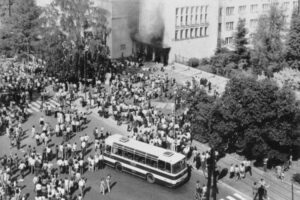
On 23 September 1976, a group of opposition activists issued an “Appeal to the Public and the Authorities of the Polish People’s Republic,” announcing the foundation of the Workers’ Defence Committee. Workers designated in the committee’s name included those who fell victim to repressions following the events of 25 June 1976. A number of demands was made in the “Appeal,” including the reinstatement of all those who had been fired, amnesty for those sentenced and imprisoned for their participation in the strikes, investigations into the scale of repressions, and punishment of those who had been guilty of breaking the law.
The letter was signed by the 14 founding members of KOR: Jerzy Andrzejewski, Stanisław Barańczak, Ludwik Cohn, Jacek Kuroń, Edward Lipiński, Jan Józef Lipski, Antoni Macierewicz, Piotr Naimski, Antoni Pajdak, Józef Rybicki, Aniela Steinsbergowa, Adam Szczypiorski, Father Jan Zieja and Wojciech Ziembiński. KOR was made up of people whose views and outlook varied widely, from Christian democrats and the right to the left and the socialists.
On 29 September, the first issue of Komunikat KOR (The KOR Message) was published. It listed 33 names of KOR members, their home addresses and telephone numbers. The names of the opposition’s trusted defence attornies, Jan Olszewski, Jacek Taylor and Władysław Siła-Nowicki, were the only ones to be kept secret. The activity of KOR was widely discussed by Radio Free Europe: thus the state no longer held a monopoly on public information.

Ruch Obrony Praw Człowieka i Obywatela (ROPCiO, or the Movement for the Defence of Human and Civic Rights) was established in 1977. It was comprised of right-wing opposition activists, who held Józef Piłsudski as their historical role model.
The guiding principle of both KOR and ROPCiO was to provide workers with aid and offer them assistance. New employment or other means of support were secured for those who were fired, families of the imprisoned were contacted, and support offered to those who appeared before the courts. KOR associates ostensibly observed the trials as members of the public; unofficially, they were intermediaries who kept an eye on the judiciary in the People’s Republic. Attornies with links to KOR defended the accused.
The practice of providing the repressed with legal and social aid resonated strongly with workers. Many opposition activists (including Lech Wałęsa) have said repeatedly than June 1976 marked a turning point in how they perceived reality in Poland, how they regarded the authorities and the concept of social activism.
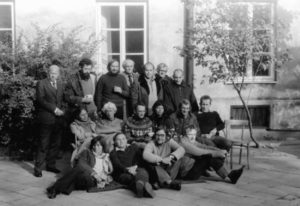
According to historians, it was the collaboration launched in 1976 that made it possible for KOR and ROPCiO to succeed in breaking through the overpowering sense of isolation and anonymity prevalent among workers. As knowledge of authorities oppressing the workers by both physical and social means became more widespread, fellow workers were able to break down the barriers of fear. Finally, the fact that the both KOR and ROPCiO were active in many fields obliged the authorities to yield to at least some of the demands made by the opposition.

